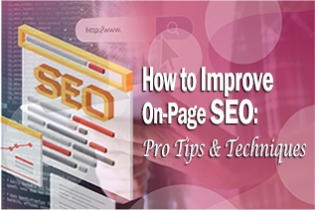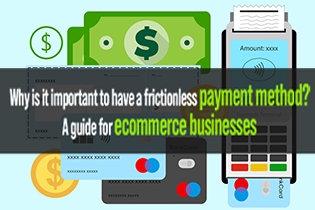
In any business, large or small, lead generation should be an integral part of the marketing process.
For starters, it helps buyers move along the sales funnel with little to no friction; after all, you provide potential customers with all the information and help they require, qualifying them in the process.
You also assert yourself as a trustworthy expert who can resolve the customers’ pain, making the decision phase for buyers a cinch.
Lead generation also helps to scale your customer acquisition efforts and can increase your conversion rate drastically. This is not to mention how it shortens the sales cycle and enables you to build long-lasting relationships with your customers.
For all these reasons and more, your business must make sure to get the most out of its lead generation program.
Unfortunately, many businesses have a hard time getting it right. In fact, according to CSO insights, more than two-thirds of B2B companies flounder when it comes to lead generation.
Let’s look at some of the most common mistakes in lead generation and how to solve them.
1. You Aren’t Using Your Website Correctly
Your website is your strongest tool when it comes to lead generation and inbound marketing. It’s the online face you show the world and is the strongest ambassador for your brand.
Therefore, when designing your site, make sure that it offers prospective customers the information they are looking for.
Add a strong blog filled with valuable content, and infuse it with calls to action, also known as CTAs, that compel your customers to take one step closer towards the bottom of the funnel.
Most buyers today perform a great deal of research before reaching out to a business. Whoever provides them with the most helpful information is likely to be the one who gets their business.
Yet, the sad fact is that many businesses aren’t optimizing their sites for lead generation. Here are some mistakes they make:
Some sites don’t have a blog or aren’t using it to generate leads
As mentioned earlier, customers today want to know as much as they can before they talk to your sales team.
So, you need to find a way to provide them with the information they are looking for, and one way to do this is through a blog. You could use your blog to answer some of the most frequently asked questions posed to your sales and marketing teams.
In fact, blogs can be so effective that a site like HubSpot generates a large portion of its leads through it. And, blogs have the added benefit of converting incoming traffic into qualified leads, the kind interested in doing business with you.
If your business isn’t blogging or is blogging in the wrong way, such as forgetting to use CTAs or writing unscannable content, then you are missing out on a great opportunity.
Some sites fail to optimize their top pages

Not all web pages are created equal. Some receive more incoming traffic than others. For example, your homepage or the “About us” page should be receiving more visitors than an outdated post on your blog.
Bearing this in mind, you want to pay more attention to your high-performing pages, devoting more time to optimizing them and increasing their conversion ratios. Otherwise, you’re leaving a huge number of leads on the table.
2. You Are Misusing Social Media
When it comes to your social media presence, you want to be strategic. This means knowing what to expect and which options will be the most effective for your business.
For starters, you should realize that social media is well suited for top-of-the-funnel customers, helping you build awareness for your brand and business. At the same time, social media can also be a very powerful tool for driving conversions.
However, there are many ways to do social media wrong, all of which will ruin your ability to convert and generate leads. For example, if you blast all your social media channels with your new ebook, hoping this will be enough to bring in conversions, you will probably end up disappointed.
Instead, be selective with what you post on social media and where you post it. You also want to mix it up a bit. Today, you can share a blog post on your LinkedIn page, while tomorrow, you can post about a special offer your company is presenting to your Facebook followers.
You can also provide links on your social media channels to high-performing web pages and blog posts on your site.
Additionally, you should learn the ins and outs of each social media channel and try to make the most of their features. While Twitter can provide you with lead generation cards, Facebook allows you to insert a call-to-action button near the top of your Facebook page.
Finally, know what to expect from each platform. This will largely depend on your customers' behavior and your typical buyer's journey; the better you understand the different personas that want to do business with you, the better you will be able to leverage your social media presence.
Generally speaking, whereas Facebook and Twitter may be suited for B2C businesses, LinkedIn is a more suitable platform for B2B businesses.
3. You’re Leaving The Entire Job To Sales

Many companies make the mistake of asking marketing to “build awareness” or “create brand recognition” only and then asking sales to do everything else. These companies rely solely on outbound strategies and don’t demand that their marketing teams meet specific metrics or KPIs.
What you end up seeing with these companies is a marketing department that is concerned with updating the website, preparing news releases, developing proposals, ensuring that all company communications are in line with the brand, and perhaps putting in place a content marketing strategy.
Yet, aside from wasting the opportunity to convert potential leads, the marketing team has no clear way of judging the efficacy of their actions. To make matters worse, when the entire job of generating leads is shoved onto the sales department, this creates several issues.
First, with fewer leads coming in, the sales team has to resort to their immediate contact network, which means that the number of leads will start dwindling sooner rather than later.
Over and above, the sales team ends up wasting valuable time prospecting for qualified leads, time it could have spent closing deals and fattening up the company’s bottom line.
When companies start seeing their sales decline, some of them decide to expand their sales team, which can just make things worse. After all, the issue has mostly nothing to do with the size of the sales team but with how they are generating leads in the first place.
If any of this strikes a chord with you, there are a few things you can do to fix the problem.
The most obvious solution is not to dump the entire job of generating leads onto the sales department's lap. You want to use both inbound and outbound strategies, and you should hold the marketing team accountable for the number of leads they end up generating.
Nowadays, there are many tech solutions available that can help you streamline sales tasks and close the gap between your marketing and sales teams. For example, you can provide your marketing team with various CTA templates to help them maximize their conversion ratios.
Simultaneously, you can help your sales team by giving them good time management tools as well as strong prospecting tools and a top-of-the-line CRM solution.
Keeping An Eye On The Bigger Picture
The time for using outbound tactics only and shouting the message to the end consumer is long over. Lead generation nowadays is a collaborative effort between your marketing team and your sales team. While the former will hone your inbound strategy, the latter will pay more attention to outbound strategies.
For the marketing team, the best tools at their disposal are your website and your social media presence, both of which need to be used strategically to maximize ROI. This means mastering the content marketing strategy, a difficult feat in its own right.
For the sales team, the same tactics that worked half a decade ago won’t do anymore. Consumers are more informed today, and outbound strategies need to be creative. This is all the more important considering how the average person has learned to tune out the thousands of advertisements and offers that bombard their emails daily.
Finally, the sales and marketing departments need to communicate with each other well. This means agreeing on what counts as a qualified lead and having a shared methodology of rating these leads. This will save both teams valuable time and enable them to operate as a cohesive unit, benefiting the entire company in the process.








